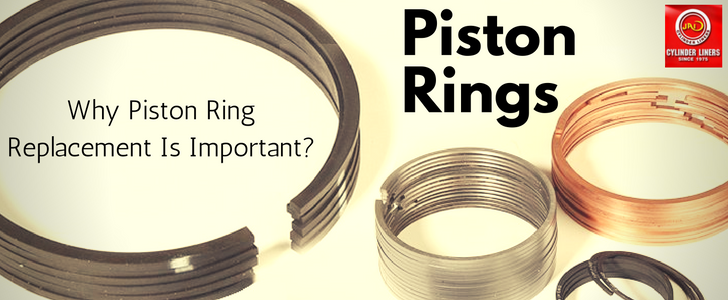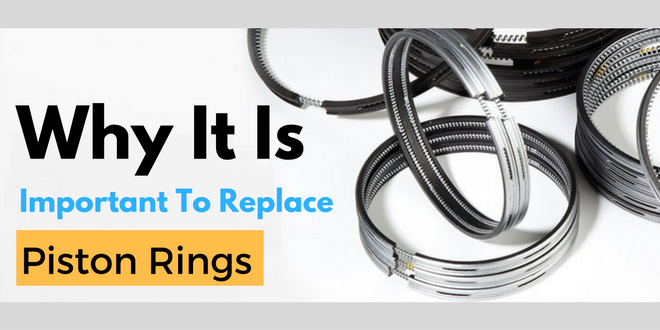Since the piston rings are critical part of the marine engine that runs on diesel, one should maintain the clearances at the minimum to serve the purpose of sealing the gases at the piston top. Excessive clearance will result in operational faults.
In order to seal the gases in the cylinder top and prevent leakage of the piston, manufacturers use and install piston rings in the grooves. It is very important to maintain the ring gap as small as possible and it is equally important that it should never close entirely.

In latest designs, manufacturers make use of piston rings cleaning ring that is incorporated in the top of the cylinder liner. The cleaning ring of piston has a slightly smaller inner diameter as compared to the liner and thus, ash scrapes and carbon deposits are built up over the piston surface.
In some cases, deposits on the top surface could result in bore polishing of the liner wall, which further causes deterioration of the cylinder condition.
Why Piston Ring Replacement is Important?
- If piston rings wear faster, you must replace
- If the piston ring struck in the ring groove and wears more on one side
- If the ring axial height is reduced in order to find the large clearance
- If there is pressure variations around the circumference of the piston rings, which are fitted in any groove and micrometer measurements show variation in the ring’s radial thickness.
- If the chromium plated piston ring is worn through or worn very thin.
Is The Driverless Car A Future Of Indian Automobile Industry?
Functions of Piston Ring
Top compression rings are used to trap combustion gases and increase the efficiency and pressure of the combustion. They also play an important part in the heat transfer process between the cylinder wall and piston.
Groove ring scrape oil and prevent it from entering to the combustion chamber.
Oil rings help distribute and regulate oil within the cylinder wall and send it back to the crankcase.
Why Piston Rings Wear?
There are many reasons behind the failure of piston rings-
- Insufficient groove clearance and piston ring, which jams the ring in the groove as a result blow-by occurs and may break the ring.
- Improper cylinder lubricating practice
- Excess wear in cylinder liner
- Excessive diametrical clearance between the cylinder liner and piston
- Excessive wear on piston ring

